I’ve been a guitar player for more than seven years now, and have played live and I definitely know my way around the fretboard. I learned using the Rocksmith platform, and the only way they teach you is using the picking method. To increase my skill set, about three years ago I decided to learn to strum the guitar, which has really helped my playing. In addition to outlining some of my own experiences with strumming versus plucking, I’ve also done extensive research and talked with some of my expert guitarist friends so that you can have one of the best learning resources available on this topic.
In this guide, I’m going to compare the two methods of playing the guitar so that you can understand how each compares to the other. With this guide, you should understand the merits of both approaches, and hopefully, you’ll want to branch out a bit.
When playing guitar, there are two methods that just about every musician will use: strumming or plucking the strings with a guitar pick. There are advantages and disadvantages to both methods, and in many cases, good guitarists work both techniques into the repertoires so that they can vary their sound as appropriate to the song. Still, in my experience, learning to transition from one methodology to another is tough, but the rewards are well worth the trouble.
In a Nutshell: The Advantages of Plucking
To start, the guitar pick is a fantastic invention; the first guitar picks only began to come into use in the late 19th century, so in the larger scale of things, they definitely are a relatively recent invention. Still, it’s hard to imagine some of the more agile and deft solos in our favorite rock songs being quite as face-melting without the standard guitar pick. This type of plectrum is very useful and allows you to pluck the strings at a high rate. As a result, you can easily execute tremolos, and you wouldn’t easily be able to pull off a pinch harmonic without the modern-day plectrum.
Additionally, plucking also makes it very easy to pull off guitar techniques like palm mutes and quick full-chord strums, so there are a lot of advantages to plucking the strings with a guitar pick. You can pick up and down for a high-speed style of playing, and it’s also easy to vary the intensity of your plucks when you’re using a pick in your music.
When it comes to techniques, there is a myriad of varying picking techniques that an accomplished guitarist will need to learn. One of the most important of these is the tremolo; to execute one of these, it’s a good idea to position the pick in your hand at an angle so that you can use the shape to guide the speed of your plucks. Other techniques, like palm muting, also require you to change up the methodology of your plucks to create unique and different sounds, so don’t feel dissuaded by the naysayers; some of the best guitarists in the world are dyed-in-the-wool pluckers.
Plucking is also very beginner-friendly; as I mentioned, I learned to pluck primarily as a playing method, and I think this was an excellent way to go for a newbie. Plucking makes it easier to get to know the fretboard of your guitar, and it also helps you get used to the up and down motions that you’ll need to master to become the best guitarist that you can be.
Finally, if you are playing electric guitar and you have a vibrato bar, you may find that picking makes the transition to your vibratos a bit easier. While you can definitely finger-strum and vibrato, it just seems like a bit of a more natural process with a pick.
Types of Picks
Recently, I bought a package of guitar picks, and you’ll be amazed at how much they can vary. Not only are there different levels of flexibility, but it’s also easy to find different picks that are made out of a wide array of completely different materials. For example, it’s easy to find nylon, acetal, and celluloid picks, but there are also less common materials used like metals, wood, bone, or even leather.
Additionally, there are also picks with massive size differentials; some musicians just love larger picks that have thumb-sized grooves in their bodies that enable them to have more grip, and some like barely-there picks that are barely larger than the thumbprint. In my experience, it takes a bit of time to find the right fit, and it’s definitely worth trying out various picks so that you can see the one that best fits your guitar playing style.
As I mentioned, one of the most common differentiating factors between picks is thickness, and in my experience, this is a major consideration for a guitarist. Here’s a listing of the most common pick gauges:
Extra Heavy: When you’re playing with an extra heavy pick, you end up with a bit more accuracy. Your tones will also ring out more, and you’ll experience a much more full dynamic range on your playing. When I want to play songs like YYZ, which requires a lot of fast, accurate picking, this is the type of pick I use. These beasts are usually about 1.20 to 1.50 mm thick.
Heavy: This is a suitable type of pick for more mellow sounds, so if you’re trying for that surf guitar-style of music on a nice Fender clean amp, then try one of these; you’ll sound great. These seem to go great for an electric lead guitar. For a heavy pick, the thickness will usually be around .80 to 1.20 mm.
Medium: If you like a bit of flexibility but a sizeable striking surface, then this is an excellent option for your playing. They have high accuracy, and if you’re going to tremolo, you’ll have a good time with a medium-gauge plectrum. Usually, these fall into the range of .60 to .80 mm.
Thin: When there’s a tremolo-laden song like the Horrors, “Do You Remember,” I like to use a skinny pick because of how springy it is. This is also a great style of pick for brighter tones and tighter dynamic ranges. In most cases, the thinnest picks will have a gauge of about .40 to .60 mm. Currently, my favorite pick for this kind of playing has a gauge of .58 mm.
Songs Where Picking Stands Out
There are several key songs where picking is the standard. Here’s a list to try out if you’re learning to use your plectrum:
- Misirlou – Dick Dale and The Del-Tones
- Highway Star – Deep Purple
- Sunday Bloody Sunday – U2
- Would? – Alice in Chains
- Needs – Collective Soul
- Caring is Creepy – The Shins
- Everything is Wrong – Interpol
- Barracuda – Heart
- Surf Rider – The Lively Ones
- Munich – Editors
Some of these can be finger-picked, but they really are designed to be picked with a standard plectrum. Songs like Misirlou are great for really learning fast fretting and quick picking, and there’s a series of open strings that you’ll have to incorporate into your playing to get the song precisely right.
In a Nutshell: The Advantages of Strumming
So, you’ve forgotten your pick at home, and you want to play. What do you do? Well, you strum with your fingers of course! Strumming is the most classic way of playing the guitar, and before the 19th century, the plectrum was primarily used for instruments like the mandolin or the shamisen. There’s nothing more natural than strumming the guitar with your fingers, and you’ll be amazed at how much easier you’ll be able to articulate your sound when you play this way.
When you’re strumming with your fingers, the sound can be totally different than the sound you’d generate with a guitar pick. Strumming also can sound better when you’re using some tonewoods. For example, sapele or mahogany seems to have a tonality that makes fingerpicking ring out more resonantly and with greater warmth. Additionally, materials like Indian rosewood also sound really great when you’re strumming with your fingers.
There are a lot of benefits to using your fingers rather than a pick. For example, when you’re playing chords with a plectrum, you hit each note individually in a sequence, but when you play those some chords with your fingers, you can make each note sound off more individually, which increases the richness of the sound.
Acoustically, playing with your fingers just sounds warmer; I tried to learn “Time in a Bottle” a few years back, and I was amazed at how much better it sounded when I switched to finger picking. This is because picking is much more accurate, and while accuracy is nice, it makes notes seem a little more tinny. This is probably because picking is just a sharper method of attacking the strings, so there’s a slight loss of warmth.
In my experience, strumming is more of a freeform style of playing; when I learned with a pick, everything had to be very precise, but as I learned to strum using my fingers, I started to see there was a bit more leeway. For example, when playing chords up and down, you have to position the tip of the pick precisely. When strumming with the fingers, you’re allowed to have a very relaxed attack on the strings, which just feels less aggressive and more comfortable.
If you’re going to be playing acoustic guitar, it’s okay to use a pick, but most will agree that the warm sound of a good dreadnought or grand auditorium sounds best when coupled with standard strumming. Also, nylon or even steel strings on an acoustic just seem to feel great on the fingertips.
Also, remember that with a pick, you’re never going to be able to hit more than one string simultaneously, but with your fingers, you can use pinching techniques to hit strings together. This means that your chords will sound more resonant and seamless when you pluck them with your fingertips. For this reason, many folk and blues guitarists opt to finger pick rather than use a plectrum.
Strumming Techniques to Consider
As a general rule, if you’re a beginner, it’s suggested that you start with a single finger when you’re learning to strum. This type of technique will be similar enough to learn with a pick that you should be able to pick it up quickly. Take your time transitioning to this finger, and log in a couple of hours just playing this way so that your brain starts to associate playing with finger strumming. When you’re starting with this style of strumming, if you’re using an acoustic, strum in the area between the sound hole and the bridge so that you can learn the baseline hand positioning. This will help you get started, and if you want to practice other positions, you can transition to them later.
Once you’ve got some basis practice strumming with your fingers, here are a few techniques that you can master:
Pinching
As the name implies, pinching utilizes two fingers to hit two strings simultaneously. Typically, when I’m pinching strings, I use my index and thumb, and it’s amazing how crisp the sound will be that you create. In Jim Croce’s “Time in a Bottle,” after you play the first several notes, there’s a section that utilizes several two-note chords that sounds great if you use this technique. Simply put, since using a pick requires that you hit the strings in rapid succession, you simply don’t quite get the fullness of using a pinch technique.
Finger Striking
This technique uses the forefinger to do just about all of the work, and while this may seem like only a beginner’s technique, many advanced players will swear by just using one finger to play a song. When using this technique, you can use your finger to execute tremolos and other advanced techniques in much the same way that you would execute these techniques with a pick.
Thumb and Two Finger Technique
Admittedly, this is the technique that I started with since I also play bass, but this technique uses your index finger, middle finger, and thumbs to play multiple strings. With this positioning, the thumb is available to strike the bassier strings such as the E, A, and D strings, and the other two fingers hit the higher-pitched strings like the G, B, and high E strings. With this technique, your hand forms something of a claw, but you’ll find that you’ll have full coverage on all of the strings on your fretboard.
Songs Where Finger Strumming Stands Out
If you love folksy songs, then you most likely enjoy a song that was played using the fingers rather than a pick. These are some of the warmest songs, and usually, these take a lot of skill to pull of. Here’s a list to learn with:
- Crazy on You – Heart (Intro Section)
- Bolero – Maurice Ravel
- Dust in the Wind – Kansas
- Nothing Else Matters – Metallica
- Everybody Hurts – REM
- Fast Car – Tracy Chapman
- House of the Rising Sun – The Animals
- If – Pink Floyd
- Thinking Out Loud – Ed Sheeran
- Time in a Bottle – Jim Croce
How to Gradually Transition from Plucking to Strumming
When you’re ready to make a transition to strumming, there are a few items that you can purchase to change up. One of which is a traditional finger pick, which is an item that fits atop your fingers that kind of works as a bridge for the two styles. When you’re purchasing one of these, there are two variations to consider: traditional finger picks, and thumb picks, and both of these can be used simultaneously.
Admittedly, when using a finger pick, you’ll lose some of the warmness that you’d get from strumming with your fingers, but as a transitional tool, this is a reasonable sacrifice. Also, when making the changeup, you can practice a few exercises:
Finger Picking Warm Ups: It’s a good idea to limber up your fingers before you start to play in general, but when you want to loosen your fingers for strumming with your fingers, it becomes fairly crucial. To really get your fingers ready, press the fingertips of both hands together and sit there with your fingers pointing towards your face. This will sort of look like you’re praying, but keep your fingers pressed like this for about a minute – it’ll flex the ligaments and make your fingers a bit more agile.
Strumming Practice: With your playing hand, form a “C” shape. Next, with your guitar positioned on your leg, strum downwards with just the very tips of your finger. It’s essential that you only barely contact the strings. This will make your hands more familiar with the actions of strumming with just the fingertips. Just really get used to plucking every string equally with your fingers, and you’ll be amazed where simple muscle memory will take you.
How Your Can Combine Both Methods When Playing
You know, you don’t have to be in either the pick-style or finger-style camp; in fact, if you want to play effectively, it’s worth considering playing the hybrid way – with both pick and fingers. To do this, you simply have to learn how to hold a pick while finger playing.
You can do this by moving your pick from between your thumb and index finger to the first joint of your middle finger. When you do this, you hold the pick in that position, which frees you up to play with your thumb and pointer. This takes a bit of practice, and I’ll be honest, you may drop your pick from time to time, but it opens up possibilities in your playing.
Bass Techniques: Should You Pick or Finger Your Music?
The common wisdom is that picking a bass guitar is for beginners, but the truth is that you can pick a bass guitar with just as much expertise as someone who finger picks only. It’s absolutely crucial to understand that you should pick the technique that you’re most comfortable with, so ignore the elitists. Remember, some of the best bassists out there use picks, including Paul McCartney, Sting, and Matt Freeman. There’s a multitude of reasons to use a pick for bass; in fact, some even use this method because you can damage your fingers on the thicker bass strings with fingerstyle strumming.
You can even go hybrid if you please; there are plenty of bassists out there that utilize slap bass techniques, picking techniques, and fingering techniques – all in the same song. Just remember that playing bass effectively comes down to your phrasing, which notes you pick, and your creativity, so using both methods can expand your musical repertoire.
Wrapping Up
I hope that this guide has illustrated to you that both of these techniques have merit when it comes to playing guitar. It’s a good idea to learn both methods so that you can open up the possibilities when you’re playing.
Picks for Bass Guitars
Polyamide-Imide and a 12 percent Graphite fill for inherent smoothness and flow. 3 edges: standard, a sharper edge adds a "pop" to string attacks, and a rounded edge for darker tone.
Provides a full sound when playing that has a lot of string resonance and crispness.
Provides a ridged gripping surface and the pick is also thick enough for a firm feel while strumming.
Perfect for someone who is looking to bring a jazzy sound out of their electric bass guitar.
Picks are triangle-shaped, which will give you three picking points.
Great for bass because they have a longer body that has a semi-rounded tip, which is great for bass playing.
Bassists can expect a much brighter tone out of these, which can be perfect for solos or for certain genres of music.
Triangle-shaped pick that allows you to use three identical edges for strumming.
Sources
- McCraw, C. (2019, February 15). Personal Interview
- Mensinger, B. (2016, April 12). How to Transition From Strumming To Fingerpicking Guitar: a 6 Step Guide. Retrieved from http://www.guitaradventures.com/learn-fingerstyle-guitar-6-steps
- MusicRadar (2018, December 01) The 10 best guitar picks: our pick of the best plectrums. Retrieved from https://www.musicradar.com/news/the-10-best-guitar-picks-our-pick-of-the-best-plectrums
- The Ultimate Guide to Guitar Picks. Retrieved from: https://ehomerecordingstudio.com/best-guitar-picks/
- Crow, Klaus (2018, February 14) Top 30 Best Intermediate Guitar Fingerpicking Songs. Retrieved from: https://www.guitarhabits.com/top-30-best-intermediate-guitar-fingerpicking-songs/
- Jerry W. (2015, February 5) 3 Beautiful Fingerpicking Patterns for Acoustic Guitar. Retrieved from: https://takelessons.com/blog/3-fingerpicking-patterns


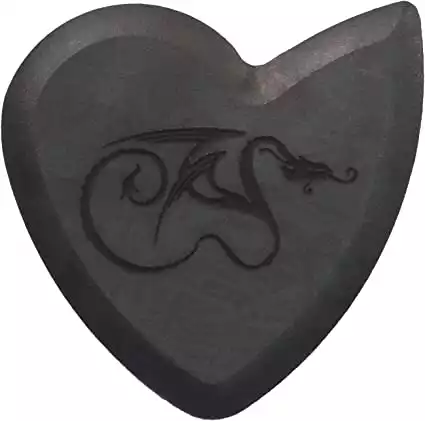
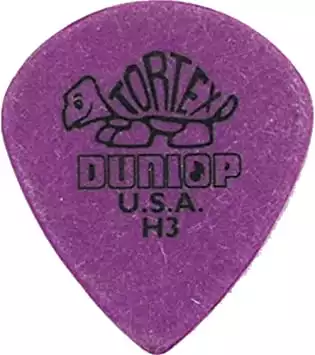
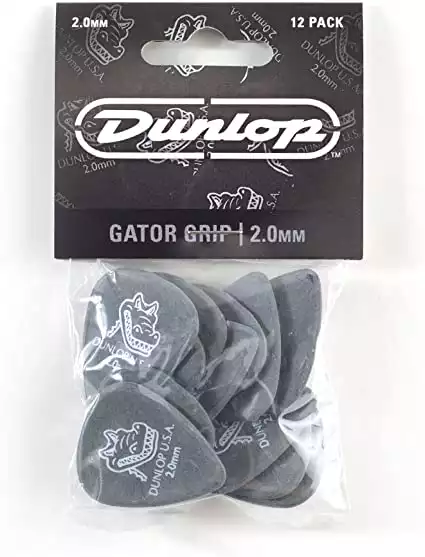
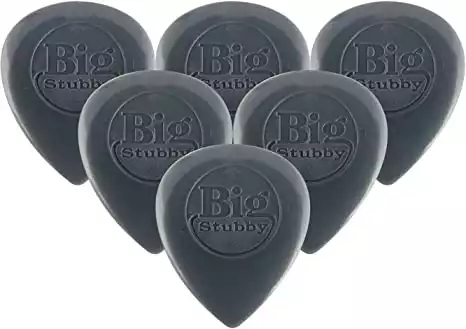

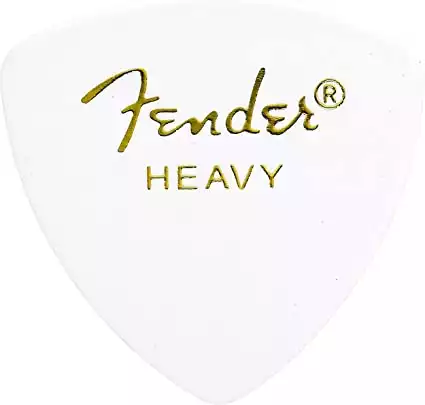
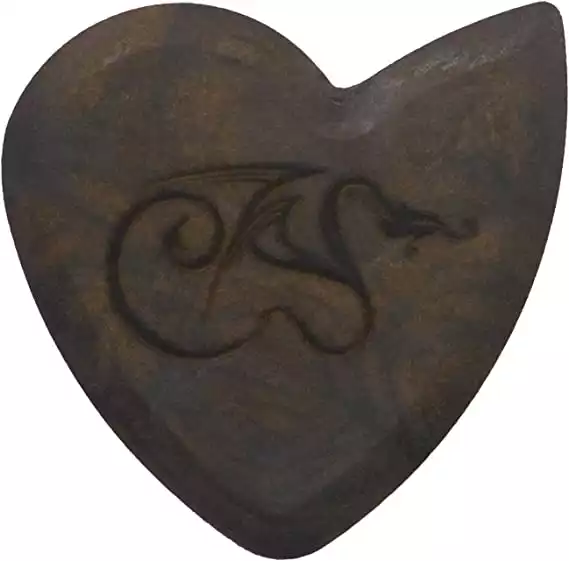
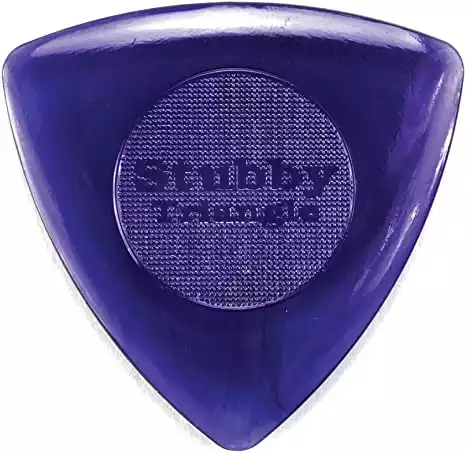






Start the discussion at talk.hearthemusicplay.com